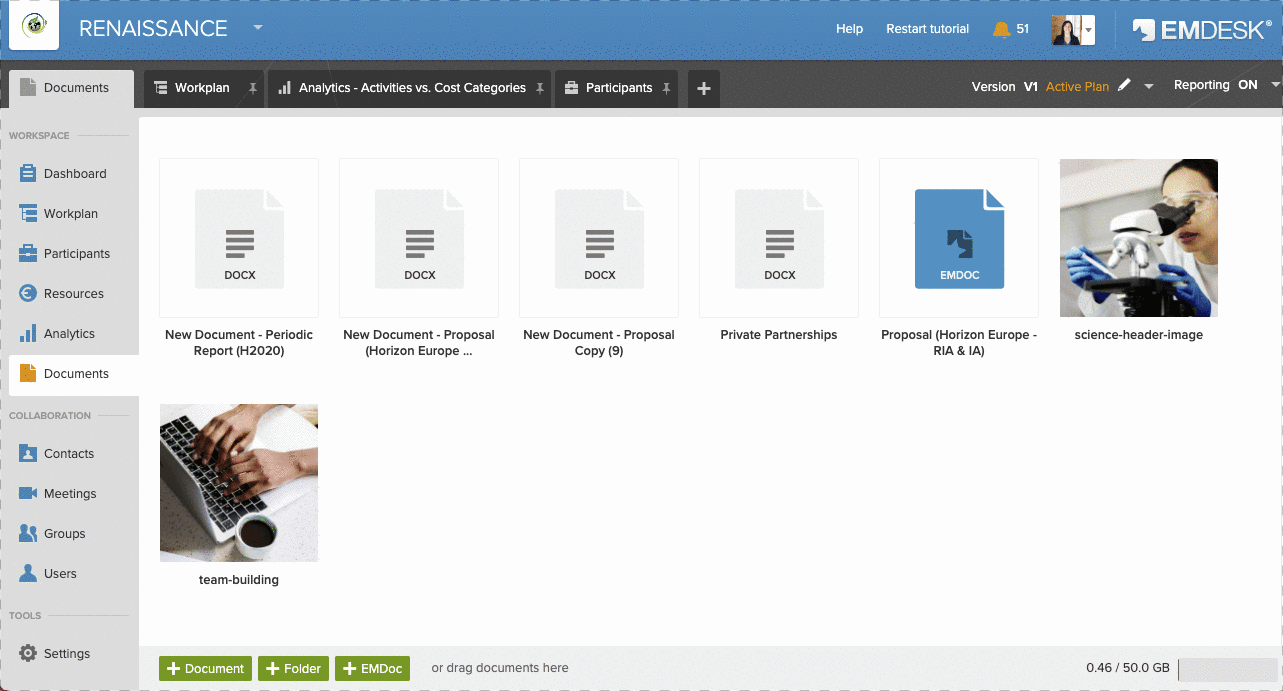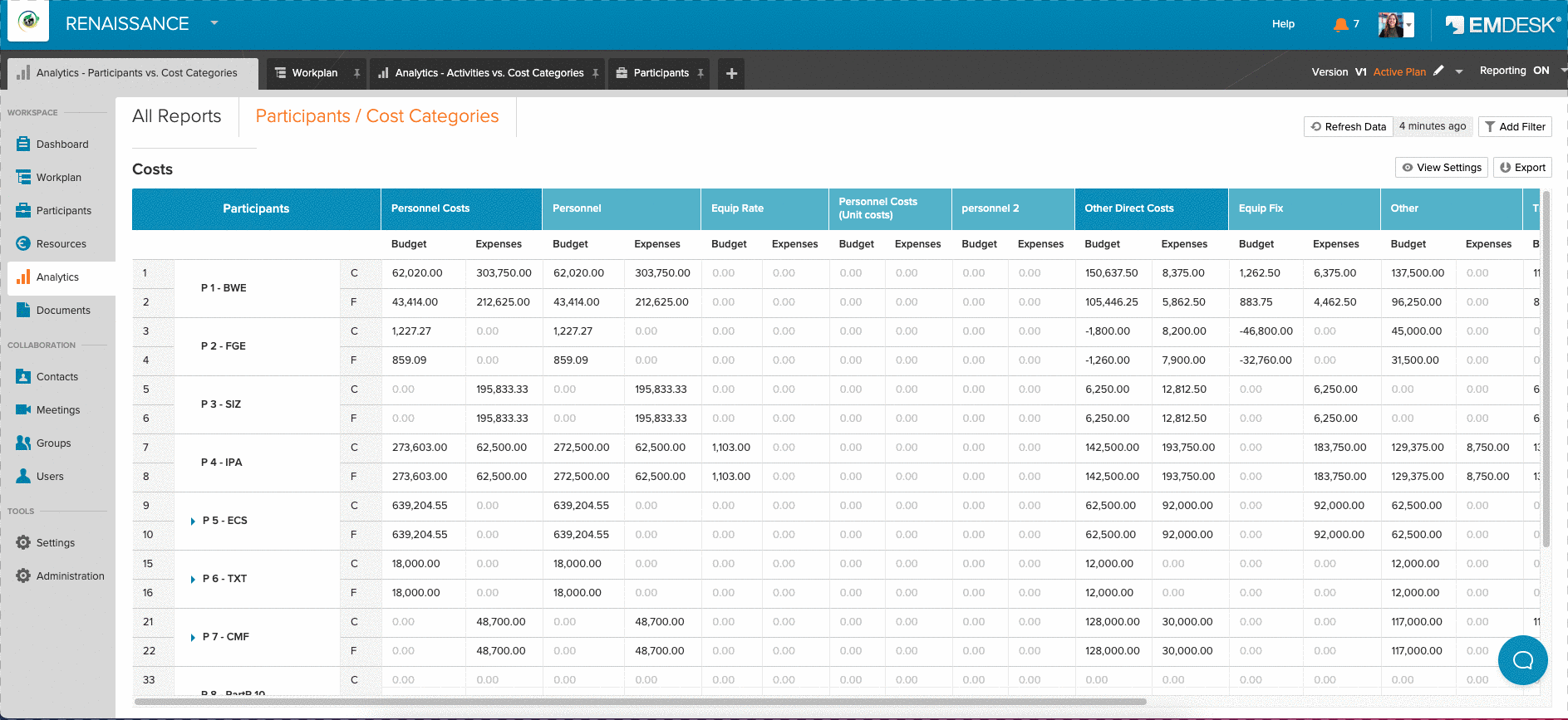Budget constitutes the cornerstone of the Implementation Section of any Horizon Europe proposal. Since Horizon Europe Grant and application reviewers use it as a way to assess the overall quality of proposals and their work plans, creating a Horizon Europe proposal budget with properly allocated resources can make the difference between the success or failure of your proposal.
In particular, budget information about activities, planned and personnel, provide reviewers with an in-depth picture of how the project will be structured and managed. Details of a Horizon Europe proposal budget usually reveal whether a proposed project has been carefully planned and if it's ultimately feasible.
With so much importance placed on the budget, it’s vital that the proposed Horizon Europe budget corresponds to the expected efforts and tasks defined in the work packages and the overall work plan.
Understanding the Horizon Europe budget sections
Horizon Europe proposals have the budget presented in two sections, Part A and Part B. Understanding what you need for each section is important to creating a successful budget:
- Part A is essentially a proposal summary, an application form that has to be filled out on the submission portal of the EC. This form contains a budget table that gives the totals for each partner and the total for the entire project. The table also includes the project’s direct costs and either the 25% flat rate for indirect costs (and entitled direct costs) or a special cost rate when applicable. The topic description indicates the expected grant for a specific project.
- Part B is the narrative part of a proposal that has to be uploaded as a PDF on the submission portal of the EC. It is the part where the project’s budget is described in great detail. It contains the description of work, work packages, as well as several tables about the budget, including the summary of staff effort, the description and justifications of subcontracting, purchase, and other costs.
Expert tip: You can write the narrative part of your proposal together with all partners using an online document editor EMDocs which is integrated into the EMDESK platform. Simply choose the Horizon Europe Proposal Template and all necessary budget tables together with other parts of the proposal will be automatically implemented into your proposal file.

What’s the Part A budget table?
The electronic form of the budget table in Part A displays a summation of the overall budget. It presents the total figures for each partner for the duration of the project broken down by cost categories. It’s essentially an overview of the overall budget, an example of which you can see in the image below:

Expert tip: In most case you will have to enter the figures for the first 5-6 columns (the other columns will be auto calculated based on this data). If you develop your budget using EMDESK solutions, you do not need to calculate these numbers – the totals per partner and cost category are presented in EMDESK at any time and you can easily copy them to fill out this table:

What’s the Part B budget table?
Part B, section 3.1 of the proposal, is where detailed information of the budget must be presented starting with the Description of work for each work package. Since the Description of work is both a case for and justification of the budget request, it’s important that it shows the goals of that work package, what expectations need to be met, how the partners will meet these goals, and how they contribute to the overall goal of the project; in a way that’s reasonable, transparent, relevant to the research proposal.
The main text is further aided by four tables that further detail the proposed budget. These are:



